Occupation Actor Role Actor | Name Errol Flynn Years active 1932–59 | |
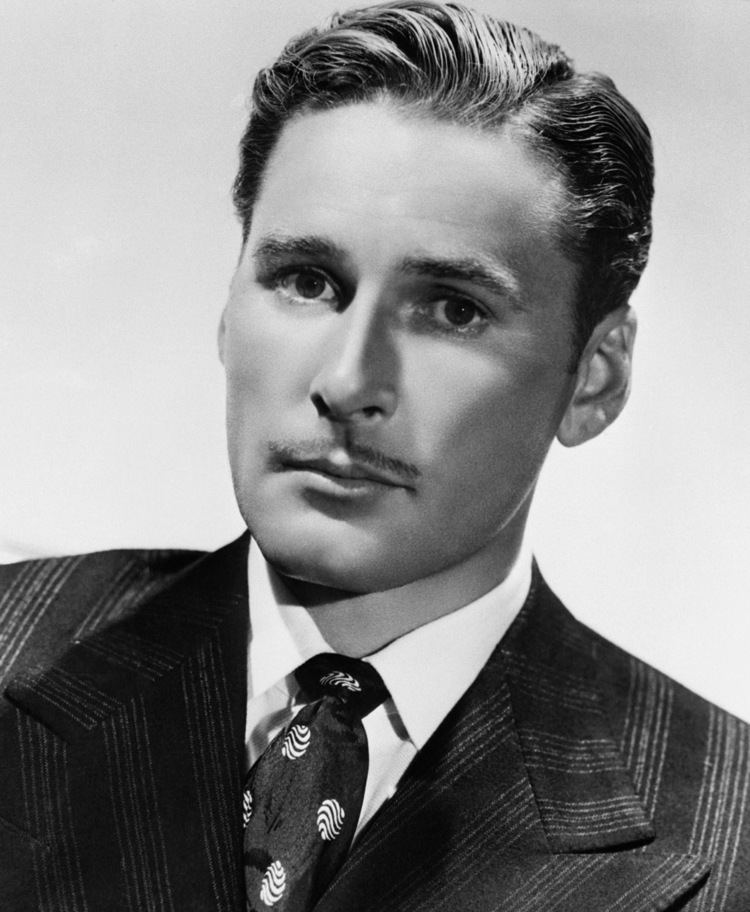 | ||
Full Name Errol Leslie Thomson Flynn Died October 14, 1959, Vancouver, Canada Children Sean Flynn, Rory Flynn, Arnella Roma Flynn, Deirdre Flynn Movies The Adventures of Robin, Captain Blood, The Sea Hawk, Dodge City, They Died with Their Boots On Similar People | ||
Tasmanian devil the fast and furious life of errol flynn
Errol Leslie Flynn (20 June 1909 – 14 October 1959) was an Australian-born American actor who achieved fame in Hollywood after 1935. He was known for his romantic swashbuckler roles in Hollywood films, as well as frequent partnerships with Olivia de Havilland. He became a U.S. citizen in 1942.
Contents
- Tasmanian devil the fast and furious life of errol flynn
- The death of errol flynn
- Early life
- In the Wake of the Bounty
- Britain
- Hollywood
- Captain Blood
- The Adventures of Robin Hood
- Second World War
- Rape allegations
- After the trial
- Post war career
- Later Warner films
- Europe
- Hollywood comeback
- Lifestyle
- Marriages and family
- Death
- Posthumous controversies
- Film portrayals
- Select radio performances
- Theatre performances
- References
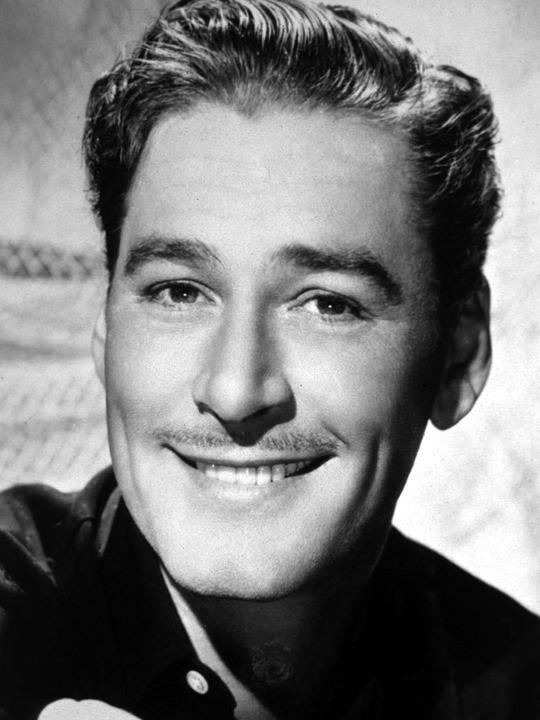
The death of errol flynn
Early life

Errol Leslie Flynn was born in a suburb of Hobart, Tasmania, where his father, Theodore, was a lecturer (1909) and later professor (1911) of biology at the University of Tasmania. His mother was born Lily Mary Young, but shortly after marrying Theodore at St John's Church of England, Birchgrove, Sydney, on 23 January 1909, she changed her first name to Marelle. Flynn described his mother's family as "seafaring folk" and this appears to be where his lifelong interest in boats and the sea originated. Both of his parents were native-born Australians of Irish, English, and Scottish descent. Despite Flynn's claims, the evidence indicates that he was not descended from any of the Bounty mutineers.
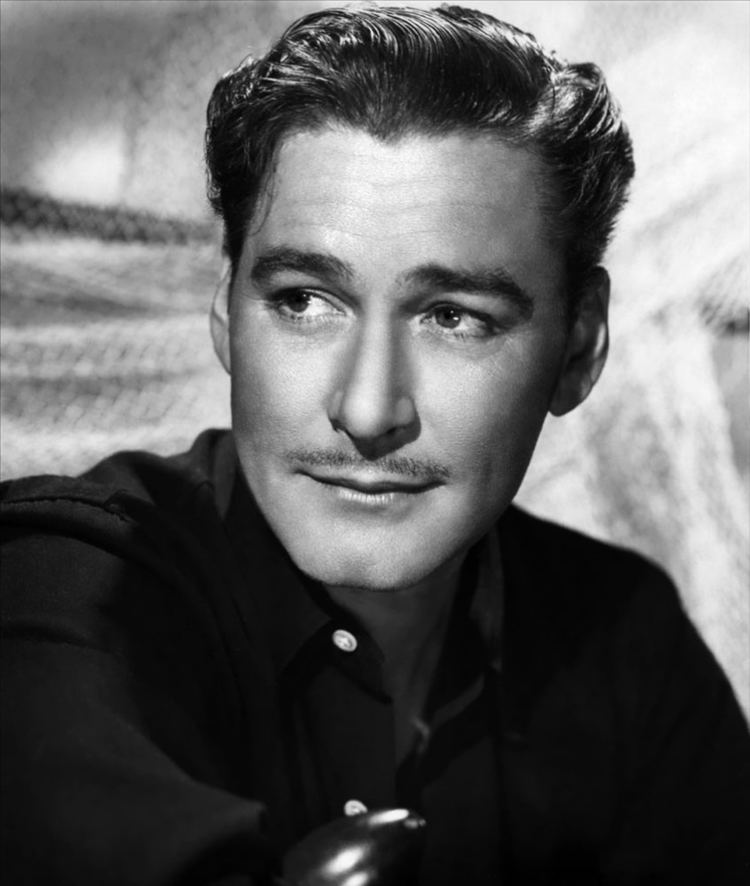
After early schooling in Hobart, from 1923 to 1925 Flynn was educated at the South West London College, a private boarding school in Barnes, London, and in 1926 returned to Australia to attend Sydney Church of England Grammar School (Shore School) where he was the classmate of a future Australian prime minister, John Gorton.
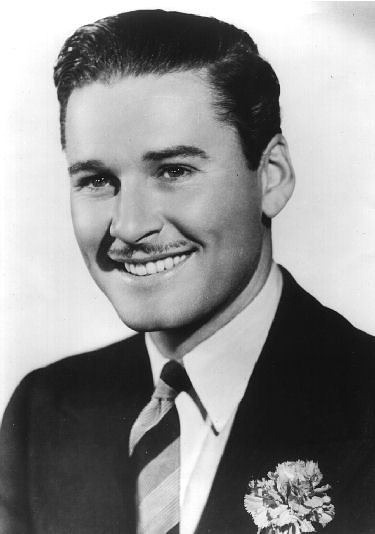
His formal education ended with his expulsion from Shore for theft, and, he later claimed, for a sexual encounter with the school's laundress. After being dismissed from a job as a junior clerk with a Sydney shipping company for pilfering petty cash, he went to Papua New Guinea at the age of eighteen, seeking his fortune in tobacco planting and metals mining. He spent the next five years oscillating between the New Guinea frontier territory and Sydney.
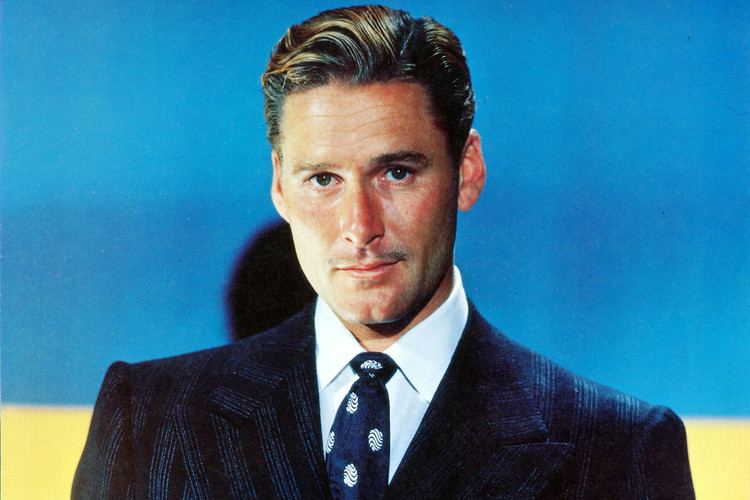
In January 1931, he became engaged to Naomi Campbell-Dibbs, the youngest daughter of Mr and Mrs R Campbell-Dibbs of Temora and Bowral NSW, a relationship which ended before 1935.
In the Wake of the Bounty

Australian filmmaker Charles Chauvel was making a film about the Mutiny on the Bounty, In the Wake of the Bounty (1933), a combination of dramatic re-enactments of the mutiny and a documentary on present-day Pitcairn Island. Chauvel was looking for someone to play the role of Fletcher Christian. There are different stories how Errol Flynn was cast. According to one, Chauvel saw his picture in an article about a yacht wreck involving Flynn. The most popular account is that he was discovered by cast member John Warwick. The film was not a strong success at the box office, but it was the lead role and seemed to ignite Flynn's interest in acting. In late 1933 he returned to Britain to pursue a career in acting.
Britain
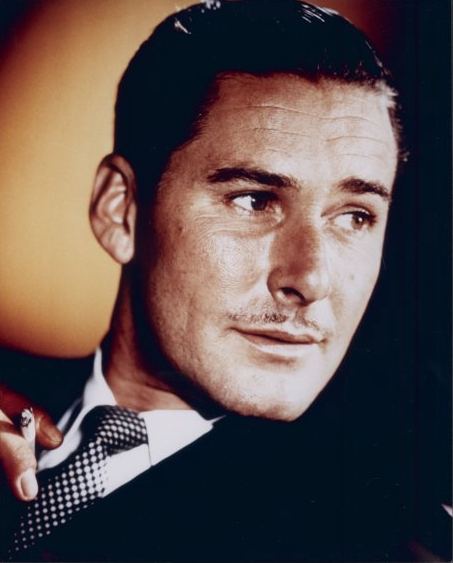
Flynn got work as an extra in a film, I Adore You (1933), produced by Irving Asher for Warner Bros. Flynn soon secured a job with the Northampton Repertory Company at the town's Royal Theatre (now part of Royal & Derngate), where he worked and received his training as a professional actor for seven months. Northampton is home to an art-house cinema named after him, the Errol Flynn Filmhouse.
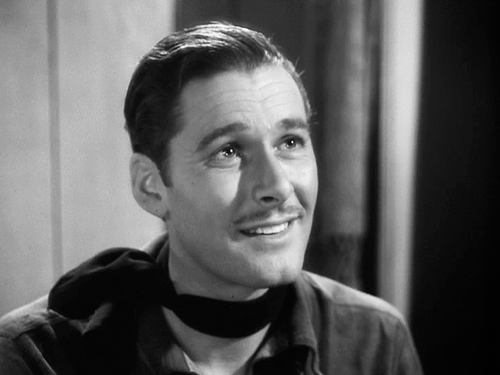
He performed at the 1934 Malvern Festival and in Glasgow, and briefly in London's West End.
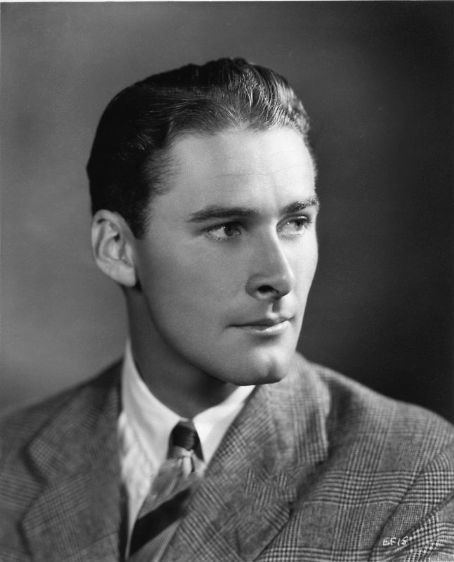
In 1934 Flynn was dismissed from Northampton Rep. after he threw a female stage manager down a stairwell. He returned to London. Asher cast him as the lead in Murder at Monte Carlo, a "quota quickie" made by Warner Brothers at their Teddington Studios in Middlesex. The movie was not widely seen (it is currently a lost film)), but Asher was enthusiastic about Flynn's performance and cabled Warner Bros.in Hollywood, recommending him for a contract. Executives agreed, and Flynn was sent out to Los Angeles.
Hollywood
On the ship from London, Flynn met (and eventually married) Lili Damita, an actress five years his senior whose contacts proved valuable when Flynn arrived in Los Angeles. Warner Bros.publicity described him as an "Irish leading man of the London stage".
His first appearance was a small role in The Case of the Curious Bride (1935). Flynn had two scenes, one as a corpse and one in flashback. His next part was slightly bigger, in Don't Bet on Blondes (1935), a B-picture screwball comedy.
Captain Blood
Warner Bros were preparing a big budget swashbuckler movie, Captain Blood (1935), based on the novel by Rafael Sabatini and directed by Curtiz. They originally intended to cast Robert Donat but he turned down the role. Warners considered a number of other actors, including Leslie Howard and conducted screen tests of those they had under contract, such as Flynn. The tests were impressive and Warners decided to cast Flynn in the lead, opposite Olivia de Havilland. The resulting movie was a magnificent success for the studio and Flynn and a new star was launched.The budget for Captain Blood was $1.242 million and it made $1.357 million in the US and $1.733 overseas thus making Warner bros. a huge profit.
Flynn had been selected to support Frederic March in Anthony Adverse (1936) but public response to Captain Blood was so enthusiastic that Warners instead reunited him with de Havilland and Curtiz in another adventure tale, this time one set in British India, The Charge of the Light Brigade (1936). It was another big hit.This movie was given a slightly bigger budget than Captain Blood at $1.33 million but had a much higher box office gross with $1.454 from the US and $1.928 from overseas making it Warner Brothers #1 hit of 1936.
For a change of pace, Warners put him in a medical melodrama, Green Light (1937), playing a crusading doctor, a role originally intended for Leslie Howard. He then made another swashbuckler, replacing Patric Knowles in what was essentially a supporting role in The Prince and the Pauper (1937). He appeared opposite Kay Francis in Another Dawn (1937), a melodrama set in a British colony. Warners then gave Flynn his first starring role in a comedy, The Perfect Specimen (1937), with Joan Blondell under the direction of Curtiz. During this period Flynn published his first book, Beam Ends (1937), an autobiographical account of his sailing experiences around Australia as a youth. He also travelled to Spain, in 1937, as a war correspondent during the Spanish Civil War.
The Adventures of Robin Hood
Flynn followed this with perhaps his most famous movie, The Adventures of Robin Hood (1938), playing the title role, opposite de Havilland's Maid Marian. This movie was a world wide success. It was the 6th top movie grosser of 1938. The budget for Robin Hood was the highest ever for a Warner Brothers production up to that point, $2.47 million but it more than made back its costs and turned a huge profit as it grossed $2.343 million in the US and $2.495 overseas.
Warners let him try a screwball comedy as a change of pace, Four's a Crowd (1938). Despite the presence of de Havilland and direction of Curtiz, it was not a success. More popular was a melodrama with Bette Davis, The Sisters (1938). He had a strong dramatic part in the all-male anti-war film, The Dawn Patrol (1938), alongside David Niven, then made his first Western, Dodge City (1939), with Curtiz and de Havilland.
Second World War
Flynn was reunited with Davis, Curtiz, and de Havilland in The Private Lives of Elizabeth and Essex (1939), playing Robert Devereux, 2nd Earl of Essex. Flynn's relationship with Davis during filming was quarrelsome; Davis allegedly slapped him across the face far harder than necessary during one scene. Flynn attributed her anger to unrequited romantic interest, but according to others, Davis resented sharing equal billing with a man she considered incapable of playing any role beyond a dashing adventurer. "He himself openly said, 'I don't know really anything about acting'", she told an interviewer, "and I admire his honesty, because he's absolutely right." Years later, however, de Havilland recounted that during a private screening of Elizabeth and Essex, an astounded Davis exclaimed, "Damn it! The man could act!"
Warners put Flynn in another Western, Virginia City (1940), a follow up to Dodge City, which was very popular- making a profit of just under one million dollars. He then made another swashbuckler from a Sabatini novel, The Sea Hawk (1940), which had been planned since 1936. It was another hit with a profit of $977,000 on a budget of $1.7 million. So too was the Western, Santa Fe Trail (1940), with de Havilland and directed by Curtiz that grossed $2.147,663 in the US making it Warner Bros. 2nd biggest hit of 1940.
In 1940, at the zenith of his career, Flynn was voted the fourteenth most popular star in the US and the seventh most popular in Britain according to the Motion Picture Daily Herald. According to Variety he was the 4th biggest star in the US and also the 4th biggest Box Office attraction overseas as well.
This was the era when Errol Flynn was one of Warner Brothers' consistently top stars. In 1937 he was Warner Bros. No. 1 star, ahead of Paul Muni and Bette Davis. In 1938 he was 3# just behind Bette Davis and Paul Muni. By 1939 he was No. 3 again, this time behind Bette Davis and James Cagney. In 1940 and 1941 he was again Warner Bros. No. 1 top Box Office draw for both years. In 1942, he was No. 2 behind James Cagney. In 1943, he was Warners #2 star, behind Humphrey Bogart.
Warners allowed him a change of pace, a screwball comedy, Footsteps in the Dark (1941), but it was not a success. Far more popular was the military drama, Dive Bomber (1941); this was his last film with Curtiz.
Flynn started a new long-term relationship with a director when teamed with Raoul Walsh in They Died with Their Boots On (1942), a biopic of George Armstrong Custer. His co-star was de Havilland - the last of twelve movies they made together. The movie was one of the biggest hits of 1942. It grossed $2.55 million in the US alone making it Warner Bros. second biggest hit of the year.
Flynn became a naturalised American citizen on 14 August 1942. With the United States fully involved in the Second World War, he attempted to enlist in the armed services, but failed the physical exam due to recurrent malaria (contracted in New Guinea), a heart murmur, various venereal diseases, and latent pulmonary tuberculosis.
Flynn was mocked by reporters and critics as a "draft dodger"; but the studio refused to admit that their star, promoted for his physical beauty and athleticism, had been disqualified due to health problems.
Flynn's first war film was Desperate Journey (1942) with Walsh, in which he played an Australian for the first time. It was another big hit. He played Gentleman Jim Corbett in Walsh's Gentleman Jim (1942), a popular boxing movie. During filming Flynn had a heart attack but he recovered. It was the third Errol Flynn movie to gross at least $2 million for Warner Bros. in 1942, according to Variety.
Another hit was Edge of Darkness (1943) which had a box office gross of $2.3 million in the US making it Warner Bros. 8th biggest movie of the year and one in which Flynn played a Norwegian resistance fighter for director Lewis Milestone. He had a cameo in Warners' all-star Thank Your Lucky Stars (1943), singing a song.In September 1942 it was announced that Flynn had signed a new contract with Warners for four films a year, one of which he was to also produce.
Rape allegations
In late 1942, two under-age women, Betty Hansen and Peggy Satterlee, accused Flynn of statutory rape at the Bel Air home of Flynn's friend Frederick McEvoy, and on board Flynn's yacht, respectively. The scandal received immense press attention. Many of Flynn's fans, assuming that his screen persona was a reflection of his actual personality, refused to accept that the charges were true. Some founded organisations to publicly protest the accusation. One such group, the American Boys' Club for the Defense of Errol Flynn—ABCDEF—accumulated a substantial membership that included William F. Buckley Jr.
The trial took place in late January and early February 1943; Flynn's attorney, Jerry Giesler, impugned the accusers' character and morals, and accused them of numerous indiscretions, including affairs with married men and, in Satterlee's case, an abortion (which was illegal at the time). He noted that the two women, who said they did not know each other, filed their complaints within days of each other, although the episodes allegedly took place more than a year apart. He implied that the women had cooperated with prosecutors in hopes of avoiding prosecution themselves. Flynn was acquitted, but the trial's widespread coverage and lurid overtones permanently damaged his carefully cultivated screen image as an idealised romantic leading player.
After the trial
Northern Pursuit (1943), with Walsh, was a war film set in Canada. He then made a film for his own production company, Thomson Productions, where he had a say in the choice of vehicle, director and cast, plus a portion of the profits. This picture had a modest gross of $1.5 million. Uncertain Glory (1944), was a war time drama set in France with Flynn as a criminal who redeems himself. However it was not a success and Thomson Productions made no more movies. In 1943, Flynn earned $175,000.
With Walsh he made Objective, Burma! in 1944 that was released in 1945, a war film set during the Burma Campaign. Although popular, it was withdrawn in Britain after protests that the role played by British troops was not given sufficient credit. A Western, San Antonio (1945), was also very popular grossing $3.553 million in the US and was Warner Bros. 3rd biggest hit of the year.
Post-war career
Flynn tried comedy again with Never Say Goodbye (1946), a comedy of re-marriage opposite Eleanor Parker, but it was not a success, grossing $1.77 million dollars in the US. In 1946, Flynn published an adventure novel, Showdown, and earned a reported $184,000 (equivalent to $2,260,000 in 2016).
Cry Wolf (1947) was a thriller with Flynn in a seemingly more villainous role. It was a moderate success at the box office. He was in a melodrama, Escape Me Never (1947), filmed in early 1946 but not released until late 1947, which lost money. More popular was a Western with Walsh and Ann Sheridan, Silver River (1948). This was a hit, although its high cost meant it was not very profitable. Flynn's behavior on set was bad and he and Walsh never worked together again.
Warners tried returning Flynn to swashbucklers and the result was Adventures of Don Juan (1948). The film was very successful in Europe, grossing $3.1 million dollars, but less so in the U.S., with $1.9, and struggled to recoup its large budget. Still, it was Warner Bros. 4th biggest hit of the year. From this point on, Warner Bros reduced the budgets of Flynn's films. In November 1947 Flynn signed a 15-year contract with Warner Bros. for $225,000 per film. His income totaled $214,000 that year, and $200,000 in 1948.
Later Warner films
After a cameo in Warner Bros' It's a Great Feeling (1949), Flynn was borrowed by MGM to appear in That Forsyte Woman (1949) which made $1.855 million in the US and $1.842 million abroad which was the 11th biggest hit of the year for MGM that year.. He went on a three month holiday then made two medium budget Westerns for Warners, Montana (1950), which made $$2.1 million and was Warner Bros.' 5th biggest movie of the year, and Rocky Mountain (1950), which made $1.7 million in the US and was Warner Bros. 9th biggest movie of the year. MGM borrowed him again for Kim (1950), one of Flynn's most popular movies from this period as it grossed $5.348 million ($$2.896 million in the US plus $2.452 million abroad) making it MGM's 5th biggest movie of the year and 11th overall for Hollywood.. It was shot partly in India. On his way home he shot some scenes for a film he produced, Hello God (1951), directed by William Marshall; it was never released and remains a lost film.
Flynn wrote and co-produced his next film, the low budget Adventures of Captain Fabian (1951), directed by Marshall and shot in France. Flynn wound up suing Marshall in court over both movies. For Warners he appeared in an adventure tale set in the Philippines, Mara Maru (1952). That studio released a documentary of a 1946 voyage he had taken on his yacht, Cruise of the Zaca (1952. In August 1951 he signed a one picture deal to make a movie for Universal, in exchange for a percentage of the profits: this was Against All Flags (1952), a popular swashbuckler. As early as 1952 he had been seriously ill with hepatitis resulting in liver damage.
In England he made another swashbuckler for Warners, The Master of Ballantrae (1953). After that Warners ended their contract with him - an association that had lasted for 18 years and 35 films.
Europe
Flynn relocated his career to Europe. He made a swashbuckler in Italy, Crossed Swords (1954). This inspired him to produce a similar movie in that country, The Story of William Tell (1954), directed by Jack Cardiff with Flynn in the title role. The movie fell apart during production and ruined Flynn financially.
Desperate for money, he accepted an offer from Herbert Wilcox to support Anna Neagle in a British musical, Lilacs in the Spring (1954). Also shot in Britain was The Dark Avenger (1955), for Allied Artists, in which Flynn played Edward, the Black Prince. Wilcox used him with Neagle again, in King's Rhapsody (1955), but it was not a success, ending plans for further Wilcox-Flynn collaborations. In 1956 he presented and sometimes performed in the television anthology series The Errol Flynn Theatre that was filmed in Britain.
Hollywood comeback
Flynn received an offer to make his first Hollywood film in five years: Istanbul (1957), for Universal. He made a thriller shot in Cuba, The Big Boodle (1957), then had his best role in a long time in the blockbuster The Sun Also Rises (1957) for producer Daryl F. Zanuck which made $3 million in the U.S.
Flynn's performance in the latter was well received and led to a series of roles where he played drunks. Warner Bros cast him as John Barrymore in Too Much, Too Soon (1958), and Zanuck used him again in The Roots of Heaven which made $3.0 million (1958). He met with Stanley Kubrick to discuss a role in Lolita, but nothing came of it.
Flynn went to Cuba in late 1958 to film the self-produced B film Cuban Rebel Girls, where he met Fidel Castro and was initially an enthusiastic supporter of the Cuban Revolution. He wrote a series of newspaper and magazine articles for the New York Journal American and other publications documenting his time in Cuba with Castro. Many of these pieces were lost until 2009, when they were rediscovered in a collection at the University of Texas at Austin's Center for American History. He narrated a short film titled Cuban Story: The Truth About Fidel Castro Revolution (1959), his last known work as an actor.
Lifestyle
Flynn developed a reputation for womanizing, hard drinking, chain smoking, and, for a time in the 1940s, narcotics abuse. He was linked romantically with Lupe Vélez, Marlene Dietrich, and Dolores del Río, among many others. Carole Lombard is said to have resisted his advances, but invited him to her extravagant parties. He was a regular attendee of William Randolph Hearst's equally lavish affairs at Hearst Castle, though he was once asked to leave after becoming excessively intoxicated.
The expression "in like Flynn" is said to have been coined to refer to the supreme ease with which he reputedly seduced women, though there is dispute about its origin. Flynn was reportedly fond of the expression, and later claimed that he wanted to call his memoir In Like Me. (The publisher insisted on a more tasteful title, My Wicked, Wicked Ways.)
Flynn had various mirrors and hiding places constructed inside his mansion, including an overhead trapdoor above a guest bedroom for surreptitious viewing. The Rolling Stones guitarist Ron Wood toured the house as a prospective buyer in the 1970s, and reported, "Errol had two-way mirrors... speaker systems in the ladies room. Not for security. Just that he was an A-1 voyeur." In March 1955, the popular Hollywood gossip magazine Confidential ran a salacious article titled "The Greatest Show in Town... Errol Flynn and His Two-Way Mirror!" In her 1966 biography, actress Hedy Lamarr wrote, “Many of the bathrooms have peepholes or ceilings with squares of opaque glass though which you can’t see out but someone can see in."
Marriages and family
Flynn was married three times: to actress Lili Damita from 1935 until 1942 (one son, Sean Flynn, 1941 – c. June 1971); to Nora Eddington from 1943 – 49 (two daughters, Deirdre, born 1945 and Rory, born 1947); and to actress Patrice Wymore from 1950 until his death (one daughter, Arnella Roma, 1953 – 98).
While Flynn acknowledged his personal attraction to de Havilland, assertions by film historians that they were romantically involved during the filming of Robin Hood were denied by de Havilland. "Yes, we did fall in love and I believe that this is evident in the screen chemistry between us", she told an interviewer in 2009. "But his circumstances [Flynn's marriage to Damita] at the time prevented the relationship going further. I have not talked about it a great deal but the relationship was not consummated. Chemistry was there though. It was there."
In Hollywood, he tended to refer to himself as Irish rather than Australian (his father Theodore Thomson Flynn had been a biologist and a professor at the Queen's University of Belfast in Northern Ireland during the latter part of his career). After quitting Hollywood, Flynn lived with Wymore in Port Antonio, Jamaica in the early 1950s. He was largely responsible for developing tourism to this area and for a while owned the Titchfield Hotel which was decorated by the artist Olga Lehmann. He popularised trips down rivers on bamboo rafts.
His only son, Sean (born 31 May 1941), was an actor and war correspondent. He and his colleague Dana Stone disappeared in Cambodia in April 1970 during the Vietnam War, while both were working as freelance photojournalists for Time magazine. Neither man's remains has ever been found; it is generally assumed that they were killed by Khmer Rouge guerrillas in 1970 or 1971.
After a decade-long search financed by his mother, Sean was officially declared dead in 1984. In 2010 a British team uncovered the remains of a Western hostage in the Cambodian jungle, but DNA comparisons with samples from the Flynn family were negative. Sean's life is recounted in the book Inherited Risk: Errol and Sean Flynn in Hollywood and Vietnam.
Flynn's daughter Rory became a fashion model and photographer. She named her son, actor Sean Rio Flynn, in memory of her half-brother, and authored a book, The Baron of Mulholland, about her father.
Death
By 1959, Flynn's financial difficulties had become so serious that he flew to Vancouver, British Columbia on 9 October to negotiate the lease of his yacht Zaca to the businessman George Caldough. As Caldough was driving Flynn and the young actress Beverly Aadland, who had accompanied him on the trip, to the airport on 14 October for a Los Angeles-bound flight, Flynn began complaining of severe pain in his back and legs. Caldough transported him to the residence of a doctor, Grant Gould, who noted that Flynn had considerable difficulty negotiating the building's stairway. Gould, assuming that the pain was due to degenerative disc disease and spinal osteoarthritis, administered 50 milligrams of demerol intravenously. As Flynn's discomfort diminished, he "reminisced at great length about his past experiences" to those present. He refused a drink when offered it.
Gould then performed a leg massage in the apartment's bedroom and advised Flynn to rest there before resuming his journey. Flynn responded that he felt "ever so much better". After 20 minutes Aadland checked on Flynn and discovered him unresponsive. Despite immediate emergency medical treatment from Gould and a swift transferral by ambulance to Vancouver General Hospital, he did not regain consciousness and was pronounced dead that evening. The coroner's report and the death certificate noted the causes of death as myocardial infarction, coronary thrombosis, coronary atherosclerosis, fatty degeneration of liver, and portal cirrhosis of the liver.
Both of Flynn's parents survived him, as did his former wives and estranged third wife, Patrice Wymore, and his four children. He is buried at Forest Lawn Memorial Park Cemetery in Glendale, California, a place that Flynn had remarked that he hated.
Posthumous controversies
In 1961, Beverly Aadland's mother, Florence, co-wrote The Big Love with Tedd Thomey, alleging that Flynn had been involved in a sexual relationship with her daughter, who was 15 at the time. The book was later made into a play starring Tracey Ullman as Florence Aadland.
In 1980, author Charles Higham wrote a controversial biography, Errol Flynn: The Untold Story, alleging that Flynn was a fascist sympathiser who spied for the Nazis before and during the Second World War, and that he was bisexual and had multiple gay affairs. He claimed Flynn had arranged to have Dive Bomber filmed on location at the San Diego Naval Base for the benefit of Japanese military planners, who needed information on American warships and defense installations. Higham admitted that he had no evidence that Flynn was a German agent, but said he had “pieced together a mosaic that proves that he is”. Flynn's friend David Niven criticised Higham for his unfounded accusations.
Subsequent Flynn biographers are critical of Higham's allegations, and have found no evidence to corroborate them. Lincoln Hurst reported that Flynn attempted to join the OSS in 1942 and was put under surveillance by the FBI, which uncovered no subversive activities. Tony Thomas and Buster Wiles accused Higham of altering FBI documents to substantiate his claims.
In 1981, Flynn's daughters, Rory and Deirdre, hired Melvin Belli to sue Higham and his publisher Doubleday for libel. The suit was dismissed on the grounds that a deceased person cannot, by definition, be libeled. In 2000, Higham repeated his claim that Flynn had been a German agent, citing corroboration from Anne Lane, secretary to MI5 chief Sir Percy Sillitoe (1946–51), and the person responsible for maintaining Flynn's British intelligence service file. Higham acknowledged that he never saw the file itself, and was unable to secure official confirmation of its existence.
In a 1982 interview with Penthouse magazine, Ronald DeWolf, son of the author L. Ron Hubbard, said that his father's friendship with Flynn was so strong that Hubbard's family considered Flynn an adoptive father to DeWolf. He said that Flynn and his father engaged in illegal activities together, including drug smuggling and sexual acts with under-age girls; but Flynn never joined Hubbard's religious group, Scientology.
Journalist George Seldes, who disliked Flynn intensely, wrote in his 1987 memoir that Flynn did not travel to Spain in 1937 to report on its civil war as announced, nor to deliver cash, medicine, supplies, and food for the Republican soldiers as promised. His purpose, according to Seldes, was to perpetrate a pre-planned hoax that he triggered by sending an "apparently harmless" telegram from Madrid to Paris. The following day, American newspapers published an erroneous report that Flynn had been killed at the Spanish front. "The next day he left Spain ... There were no ambulances, no medical supplies, no food for the Spanish Republic, and not one cent of money. The war correspondents said bitterly that it was the cruelest hoax of the time. Flynn ... had used a terrible war just to advertise one of his cheap movies", Seldes wrote.
Film portrayals
Select radio performances
Flynn appeared in numerous radio performances:
Theatre performances
Flynn appeared on stage in a number of performances, particularly early in his career:
